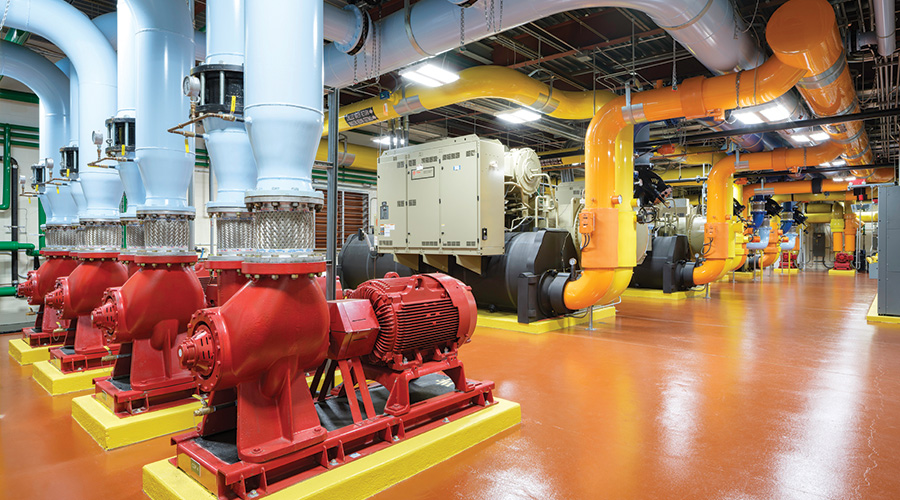NEMA Premium™ Program
The Motor and Generator Section of the National Electrical Manufacturers Association (NEMA) established the NEMA Premium™ energy efficiency program for several reasons, says Kurt Riesenberg, NEMA director of industry programs:
-
Electric motors significantly impact the total energy operating cost for institutional and commercial buildings.
-
Electric motors vary in energy efficiency. The NEMA program helps maintenance and engineering managers identify high-efficiency motors that will save money and improve system reliability.
-
NEMA Premium labeled electric motors help facility managers optimize motor systems efficiency.
-
NEMA Premium motors and their optimized systems will reduce electrical consumption, which reduces the pollution associated with electrical power generation.
The NEMA Premium program covers single-speed; polyphase; 1-500 hp; 2, 4 and 6 pole; and squirrel-cage induction motors that are NEMA Design A or Design B, continuous rated. Efficiency levels are contained in MG 1-2003. Products must meet or exceed its nominal energy efficiency levels.
Companies that manufacture motors may join the NEMA Motor and Generator Section and sign a voluntary partnership agreement to offer NEMA Premium motors. Non-NEMA manufacturers also may participate in a voluntary partnership agreement for a fee. Only those manufacturers who sign the partnership agreement may use the NEMA Premium label on their products.
Determining motor performance is accomplished by using motor efficiency benchmarks and motor standards, which are supported by NEMA, the U.S. Department of Energy (DOE) Office of Industrial Technologies Best Practices motor program - formerly Motor Challenge - and the Consortium for Energy Efficiency (CEE) Motor Systems Initiative.
DOE/CEE Support
Both the DOE's OIT Best Practices Motor Program - formerly known as Motor Challenge - and CEE's premium-efficiency motor specifications recognize the important role NEMA Premium motors can play in saving energy. Based on DOE data, the NEMA Premium motor program could save 5,800 gigawatts of electricity and prevent the release of nearly 80 million metric tons of carbon into the atmosphere over the next decade. This is equivalent to keeping 16 million cars off the road.
That's why CEE introduced the Motor Decisions Matter campaign three years ago. The campaign promotes system efficiency by encouraging industrial and commercial customers to evaluate their motor repair and replacement options and to develop a motor management plan before motors fail. For replacement motors, the campaign recommends NEMA Premium.
1-2-3 Motor Management
With motor management and planning, managers can realize significant energy savings and improve the productivity of their building's processes. But proving that to senior management can be difficult. So sponsors of the Motor Decisions Matter campaign developed the "1-2-3 Approach to Motor Management." This program, which was significantly revised in late May, highlights the energy cost savings associated with NEMA Premium motors in the hard numbers so appreciated by corporate comptrollers.
"Facility managers need to understand that a timely evaluation of their motors provides them with a savings opportunity," says Robert Boteler, chairman of NEMA's Motor & Generator Product Section's promotion committee and director of marketing for Emerson Motor Co. "Once you have evaluated your facility's motors, then you can plan for the failures of older motors and have new NEMA Premium replacements available when they do fail."
What kinds of savings do these NEMA Premium motors add up to?
"Replacing an old 50-hp motor with a NEMA Premium motor can save $1,000 to $2,000 a year in energy costs," Boteler says.
Motor Decisions Matter 1-2-3 software allows the maintenance and engineering managers to understand the energy savings of different motors in financial terms. The software calculates energy cost and potential savings, calculates and compares the financial impact of repairing or replacing motors, determines the payback periods for EPAct and NEMA Premium motors, calculates both return on investment and net present value, identifies the best repair/replace options for each motor, and generates a summary report.
Related Topics:











